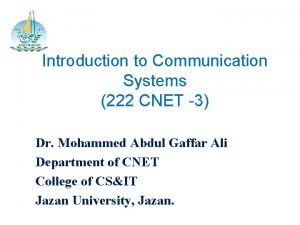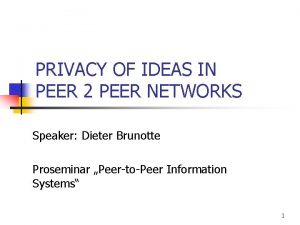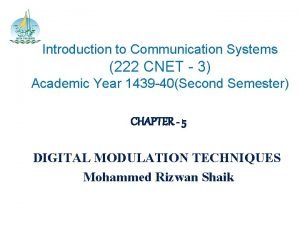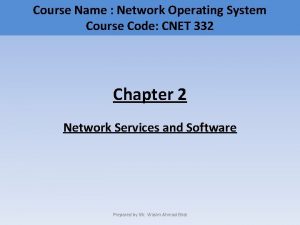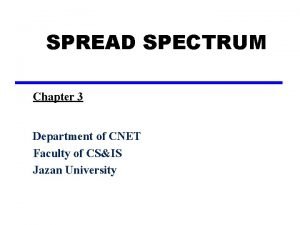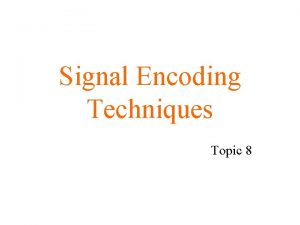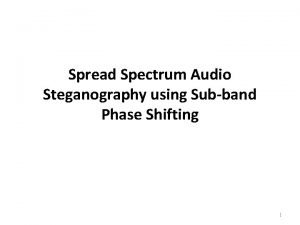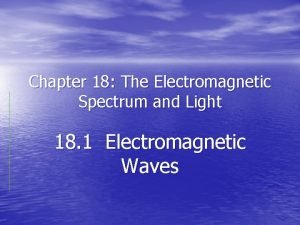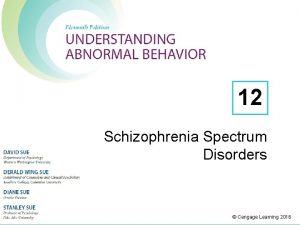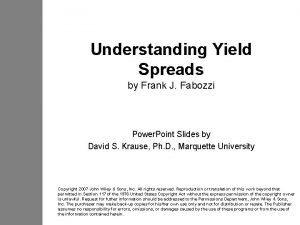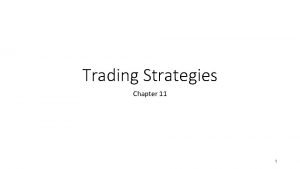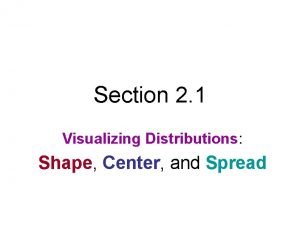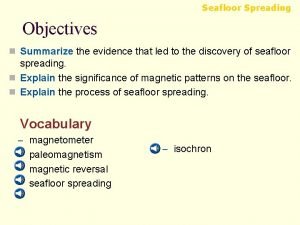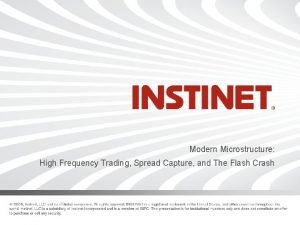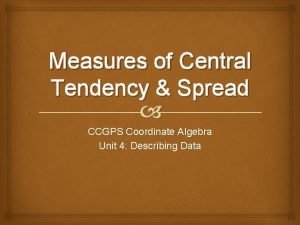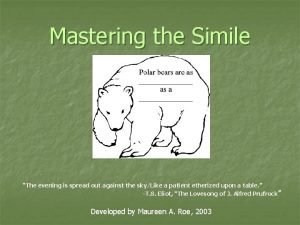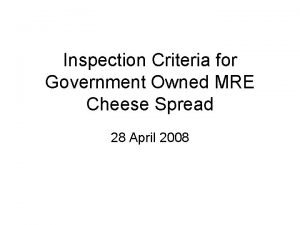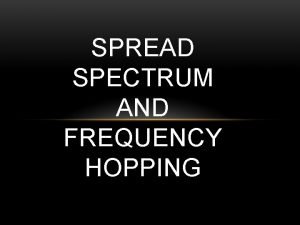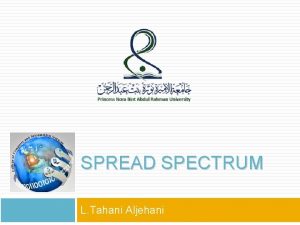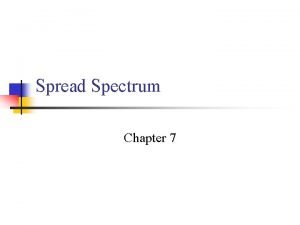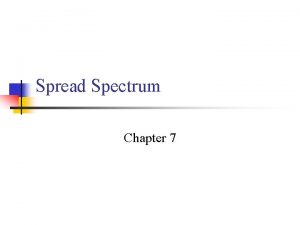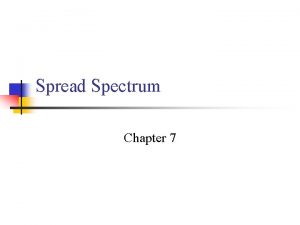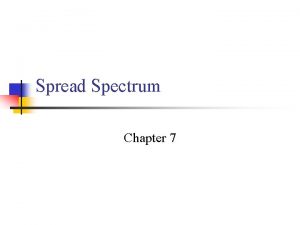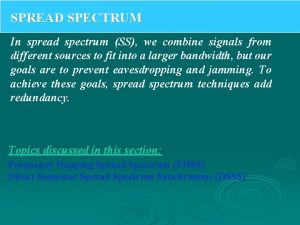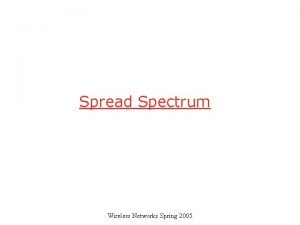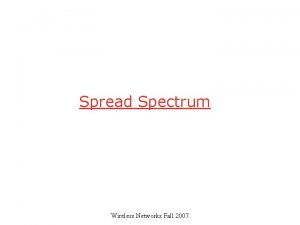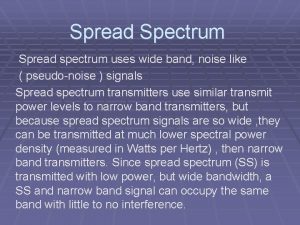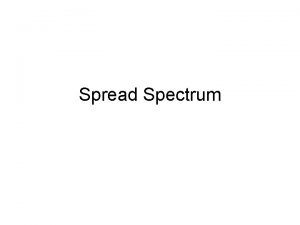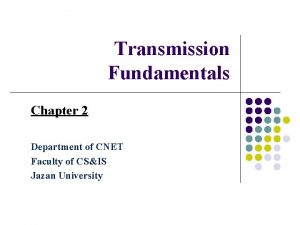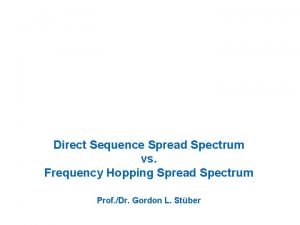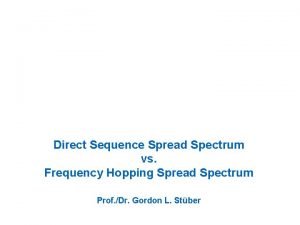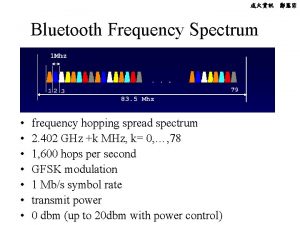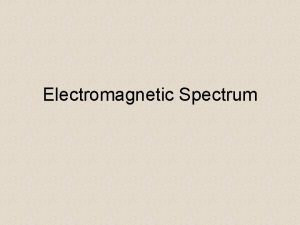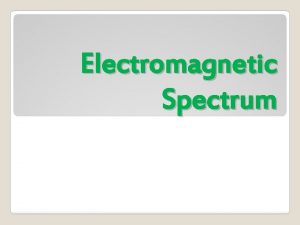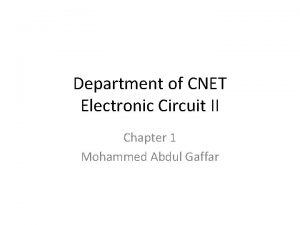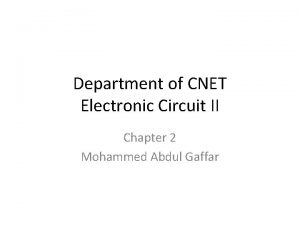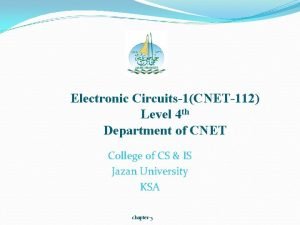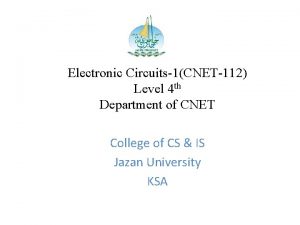SPREAD SPECTRUM Chapter 3 Department of CNET Faculty




































- Slides: 36

SPREAD SPECTRUM Chapter 3 Department of CNET Faculty of CS&IS Jazan University

Objectives In spread spectrum (SS), we combine signals from different sources to fit into a larger bandwidth, but our goals are to prevent eavesdropping and jamming. To achieve these goals, spread spectrum techniques add redundancy. Things to Understand • Frequency Hopping Spread Spectrum (FHSS) • Direct Sequence Spread Spectum (DSSS) • Code Division Multiple Access (CDMA)

Spread Spectrum • Important encoding method for wireless communications • Analog & Digital data with Analog signal • Spreads data over wide bandwidth • Makes jamming and interception harder • Two approaches, both in use: —Frequency Hopping —Direct Sequence

Spread Spectrum Concept • Form of wireless communications in which the frequency of the transmitted signal is deliberately varied. This results in a much greater bandwidth than the signal would have if its frequency were not varied. • This wireless technique is used where we require a bandwidth several times more than original bandwidth. • In SS signals from different sources are also combined to fit into larger bandwidth • SS spread the original spectrum needed for each station Bandwidth required by station =B Bandwidth spread by SS is Bss >> B • The expanded bandwidth allows the source to wrap its message in a protective envelope for more secure transmission.

Figure: Spread Spectrum Spreading Code

How is the SS signal different from the normal signal? 1. This signal occupies a larger bandwidth than that of a normal signal. (Therefore the name Spread Spectrum). 2. The spread spectrum signal invariably uses some kind of coding. The code word associated with an SS signal is independent of the information carried by a signal. 3. The most important point is that the SS signal is “pseudorandom” in nature. This makes it appear like “random noise”. Therefore the normal receiver cannot demodulate the SS signal. Only a specially designed receiver can demodulate it to recover the information.

Spread Spectrum Advantages • Immunity from various noise and multipath distortion —Including jamming • Can hide/encrypt signals —Only receiver who knows spreading code can retrieve signal • Several users can share same higher bandwidth with little interference —Cellular telephones —Code division multiplexing (CDM) —Code division multiple access (CDMA)

General Model of Spread Spectrum System

Techniques of Spread Spectrum 1. Frequency Hopping Spread Spectrum(FHSS) 2. Direct Sequence Spread Spectrum(DSSS)

Frequency Hopping Spread Spectrum (FHSS) • Frequency-hopping spread spectrum (FHSS) is a method of transmitting radio signals by rapidly switching a carrier among many frequency channels, using a pseudorandom sequence known to both transmitter and receiver. • Eavesdroppers hear unintelligible blips. • Jamming on one frequency affects only a few bits.

Basic Operation • Typically 2 k carriers frequencies forming 2 k channels • Channel spacing corresponds with bandwidth of input • Each channel used for fixed interval — 300 ms in IEEE 802. 11 —Some number of bits transmitted using some encoding scheme • May be fractions of bit (see later) —Sequence dictated by spreading code

Frequency Hopping Example

Frequency Hopping Spread Spectrum System (Transmitter)

Frequency Hopping Spread Spectrum System (Receiver)

How the eavesdropping & jamming is avoided? • If a intruder tries to intercept the transmitted signal, it can only access a small piece of data because it doesn’t know the spreading sequence to quickly adapt for next hop. • Anti-jamming : a malicious sender may be able to send noise to jam the signal for one hopping period(randomly), but not for the whole period • Applications of FHSS : Military uses it.

Bandwidth Sharing in FHSS • • FHSS is similar to FDM It can use Multiple FSK (MFSK) Let number of hopping frequencies be M we can multiplex M channels into one by using the same Bss Important • In FDM, each station uses 1/M of bandwidth but allocation is fixed. • In FHSS, each station uses 1/M of bandwidth but allocation changes at every hop.

Bandwidth Sharing

Disadvantages Of FHSS • It has a relatively low transfer limit, since only so much information can be sent over any given frequency. • There is also no built in redundancy or error checking. Too many bits come out corrupted. • It takes a significant time, to establish sync between the receiver and transmitter. • Complex and expensive digital frequency synthesizers are required to be used.

Direct Sequence Spread Spectrum (DSSS) • The direct sequence spread spectrum (DSSS) technique expands the bandwidth of the original signal. Each bit is assigned a code of n bits, called chips, where the chip rate is n times that of the data bit. • One method: — Combine input with spreading code using XOR — Input bit 1 inverts spreading code bit — Input zero bit doesn’t alter spreading code bit — Data rate equal to original spreading code • Performance similar to FHSS

Direct Sequence Spread Spectrum (DSSS)

Direct Sequence Spread Spectrum Example

Direct Sequence Spread Spectrum Transmitter

Direct Sequence Spread Spectrum Receiver

Bandwidth Sharing in DSSS • The sharing of bandwidth is conditional: —Bandwidth can’t be shared if we use spreading code that spreads signals from different stations that can not be combined and is separated e. g. Some Wireless LAN s use DSSS & spread bandwidth which can’t be shared. —Bandwidth can be shared, if we use a special type of sequence code that allows combining & separating of spread signals e. g. a special code allow us to use DSSS in cellular telephony.

Advantages Of DS-SS Systems Advantages • The interference caused by the multipath reception is minimized successfully. • The performance of DS-SS system in presence of noise is superior to other system such as FH-SS system. • This system combats the intentional interference (jamming) most effectively.

Disadvantages Of DS-SS Systems • DSSS system are slow. • The channel bandwidth required, is very large. But this bandwidth is less than that of a FH-SS system. • The synchronization is affected by the variable distance between the transmitter and receiver.

DSSS vs. FHSS

Code Division Multiple Access (CDMA) • CDMA is an example of multiple access, where several transmitters can send information simultaneously over a single communication channel. To permit this without undue interference between the users, CDMA employs spread-spectrum technology and a special coding scheme (where each transmitter is assigned a code).

Code Division Multiple Access (Basics) • Multiplexing Technique used with spread spectrum • Start with data signal rate D — Called bit data rate • Break each bit into k chips according to fixed pattern specific to each user — User’s code • New channel has chip data rate k. D chips per second • E. g. k=6, three users (A, B, C) communicating with base receiver R • Code for A = <1, -1, 1> • Code for B = <1, 1, -1, 1, 1> • Code for C = <1, 1, -1, 1, 1, -1>

CDMA Example

CDMA Explanation • • Consider A communicating with base Base knows A’s code Assume communication already synchronized A wants to send a 1 — Send chip pattern <1, -1, 1> • A’s code • A wants to send 0 — Send chip[ pattern <-1, 1, 1, -1> • Complement of A’s code • Decoder ignores other sources when using A’s code to decode — Orthogonal codes

CDMA Advantages And Disadvantages • Advantage —Good protection against interference and tapping. • Disadvantages —Receiver must be precisely synchronized with the transmitter to apply the decoding correctly. —Receiver must know the code and must separate the channel with user data from the background noise composed of other signals and environmental noise.

Seven Channel CDMA Encoding and Decoding

Further Readings • http: //sorin-schwartz. com/white_papers/fhvsds. pdf • http: //student. ing-steen. se/wlan/Chapter_3. pdf

Related Videos • Direct Sequence Spread Spectrum • https: //www. youtube. com/watch? v=v. Zvljy. SEl. Ik • CDMA • http: //student. ing-steen. se/wlan/Chapter_3. pdf

QUESTIONS ? ? THANK YOU
 Cnet communication
Cnet communication Content syndication ecommerce
Content syndication ecommerce Cnet
Cnet Cnet3
Cnet3 Cnet ftp
Cnet ftp Frequency hopping spread spectrum
Frequency hopping spread spectrum Frequency-hopping spread spectrum
Frequency-hopping spread spectrum How to spread cold butter
How to spread cold butter Src spread spectrum
Src spread spectrum Line spectrum and continuous spectrum difference
Line spectrum and continuous spectrum difference Absortpion
Absortpion Nit calicut chemistry faculty
Nit calicut chemistry faculty Reformation ap world history
Reformation ap world history Chapter 18 electromagnetic spectrum and light
Chapter 18 electromagnetic spectrum and light Chapter 12 schizophrenia spectrum disorders
Chapter 12 schizophrenia spectrum disorders Chapter 12 schizophrenia spectrum disorders
Chapter 12 schizophrenia spectrum disorders Yield to worst
Yield to worst Sandwiches consists of hot filling
Sandwiches consists of hot filling Bond swap spread
Bond swap spread Lightweight wood truss
Lightweight wood truss Butterfly strategy
Butterfly strategy Protective put payoff diagram
Protective put payoff diagram Spread of christianity in europe
Spread of christianity in europe What started the renaissance
What started the renaissance The renaissance began in italy
The renaissance began in italy Spread plate vs pour plate
Spread plate vs pour plate Shape center spread
Shape center spread Seafloor spreading theory
Seafloor spreading theory How seeds spread
How seeds spread Capture the spread
Capture the spread Central tendency and spread homework
Central tendency and spread homework Spread simile
Spread simile Let us go out tonight
Let us go out tonight Isolation and preservation method for pure culture
Isolation and preservation method for pure culture Mre cheese spread
Mre cheese spread Measure of center
Measure of center Not spread
Not spread
